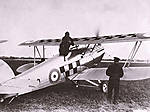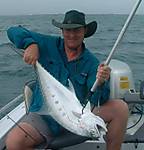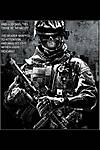
Another update! I got the small bits attached to the bottom of the fuselage (why is it all the delicate bits go where you don't see them and can potentially destroy them when picking up your model?):

Dragon provides a very nice looking two part PE loop aerial, which I had planned to use. Unfortunately, by the time I got the parts off the sprue, and glued together, it had gotten bent out of shape a bit, so I went with the plastic part provided:

Also got the wheels done up. I started by painting the hubs semi-gloss black, and then painted the tires with Model Master Aircraft Interior Black (which is a nice lightened black color). After that, they were a bit too flat looking for rubber, so I rubbed them down with an old piece of a cotton T-Shirt to get a more rubber-like sheen to them. Here is a comparison (flat paint on the right):

On the 110, the tires need to be flattened a bit, otherwise it will look strange being tip-toed. The challenge with this is that the wheels sit at an angle, so you cannot just sand a flat spot on the bottom.
So, to tackle this problem, I used a protractor to find the proper angle of the wheels, and made a template from a piece of foam-core:

I then was able to hold the wheel against the angle of the foam-core which would enable me to sand it at the proper angle:

Another benefit of the foam-core is that it helps keep the sanding stick flat when sanding:

The end result:

I then sprayed a coat of Model Master RLM 66 over the area of the tire that contacts the surface to give it a lighter look than the sidewalls. Unfortunately, it is pretty subtle so it does not photograph well, although it is noticeable in person. In the next update I'll add a little dirt to the tires and show the finished part.
Thanks for looking, comments/questions welcome!
Doug






























































